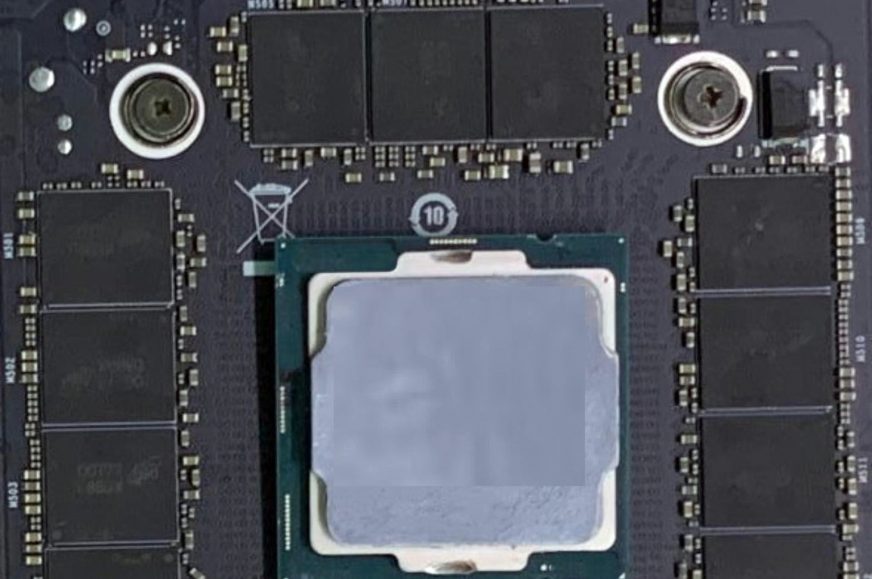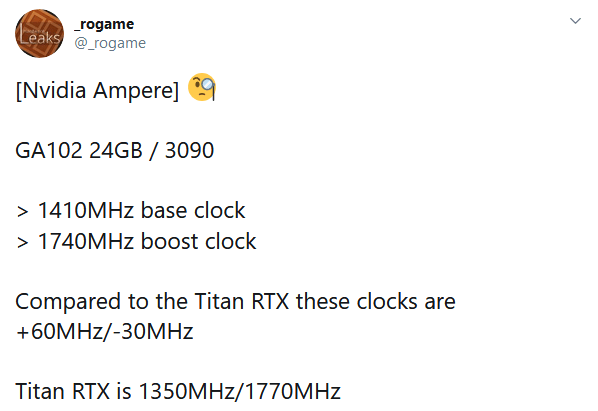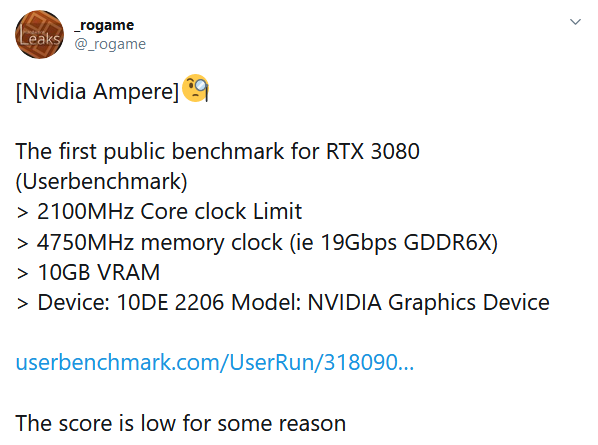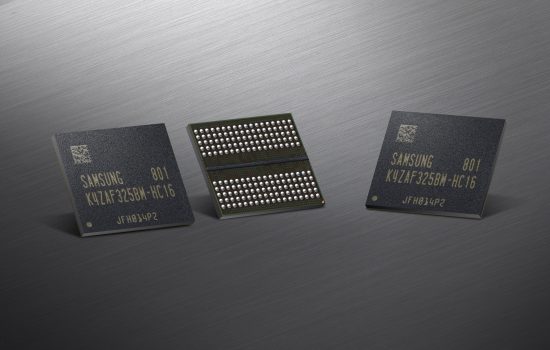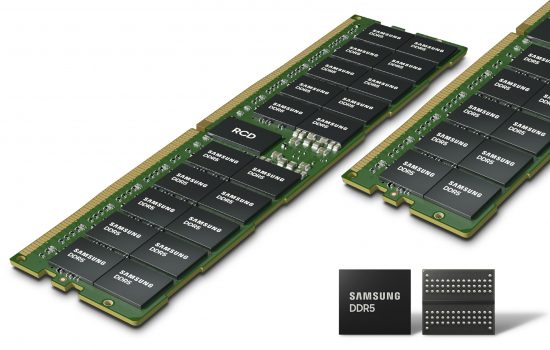Specifications of GeForce RTX 3080 and GeForce RTX 3090 in the leaks so far
Next generation of Nvidia GeForce graphics cards is almost here. The reveal is going to be on September 1th, but over the last weekend we learned interesting new information about them. We have some parameters for the RTX 3080 and the RTX 3090 SKUs, but more importantly, it turns out that the Ampere GPUs come with a completely new memory. Micron has confirmed that they have developed special GDDR6X chips for Nvidia that will increase frequencies and bandwidth by 50% over GDDR6. So how is it shaping up?
Thanks to the leak of the document from Micron, the GDDR6X is probably a confirmed fact for Ampere graphics. Not much is yet known about the other parameters though, or at least not from sources reliable enough . Recently however, preliminary parameters for the top two SKUs have come to the surface, although they are still incomplete.
Rumoured GeForce RTX 3090 specs: 24 GB memory
According to leaker _rogame, the most powerful Ampere SKU should probably be GeForce RTX 3090. It reportedly has 24 GB of GDDR6X memory, not 12 GB as Micron says (but maybe both variants will be available). However, the bus would be 384-bit in either case. If the effectively memory frequency were 19.0 GHz, then we would get a bandwidth of 912 GB/s, and if the memory ran at 21.0 GHz, we’re at 1008 GB/s. It’s possible that the frequency is somewhere in between these values, of course.
According to _rogame, the RTX 3090’s clock is reportedly set at 1410 MHz in the base and 1740 MHz for the boost. Of course, so far we have to take it with a grain of salt. Unfortunately, it is still not known how many computing units/shaders the GA102 and the GeForce RTX 3090 chip contains – there were speculations about 5376 or 5248 shaders, but do not take it for a fact, we probably rather have to admit that we do not know.
Rumoured GeForce RTX 3080 specs: 10 GB GDDR6X
The same _rogame found possible specs of the GeForce RTX 3080, in this case they are located in the UserBenchmark database. They are incomplete however. According to the entry, the GA102 GPU in this case has a GPU clock limit of 2100 MHz, but this is not what you will get as the actual clock when gaming or what Nvidia calls the boost clock. It’s just the internally set maximum for GPU frequency. In practice, the clock will be lower while gaming (and the official Boost Clock will probably be even lower). Again, it is not known how many computing units this GPU has – it is possible that it also uses the GA102 chip, but it would probably be significantly cut-down.
But what the UserBenchmark shows is, is the memory. The GeForce RTX 3080 also uses GDDR6X according to it, with this model it will run at effectively frequency of 19.0 GHz. The database detects 4750MHz clock, which is a quarter of 19,000 MHz. The capacity of this card is reported as 10 GB, which means ten chips, so the bus should be 320 bits. At the frequency specified, the card would have a memory bandwidth of 760 GB/s.
Leaked PCB: 24 GB of memory. Over 20 supply phases crammed around
It was reported a while ago that Ampere will have a relatively high TDPs. This is perhaps evidenced by photos of the PCB apparently belonging to te GeForce RTX 3090 card, which appeared on Friday. The PCB of the card seems to have 12 spots for memory chips on the back of the PCB, so if there are another 12 spots in the front, it would probably be a 24GB card.
At the same time, it can be seen on the PCB that the power cascade will be extremely strong and will be located in two rows running in full width of the PCB on both sides of the GPU and the memory (the VRMs will be crammed quite close towards the memory so let’s hope the PCB will be well cooled). Judging by the soldering contacts on the back, a total of over 20 phases are present; according to some leaks 20 phases out of these might be dedicated to powering the GPU.
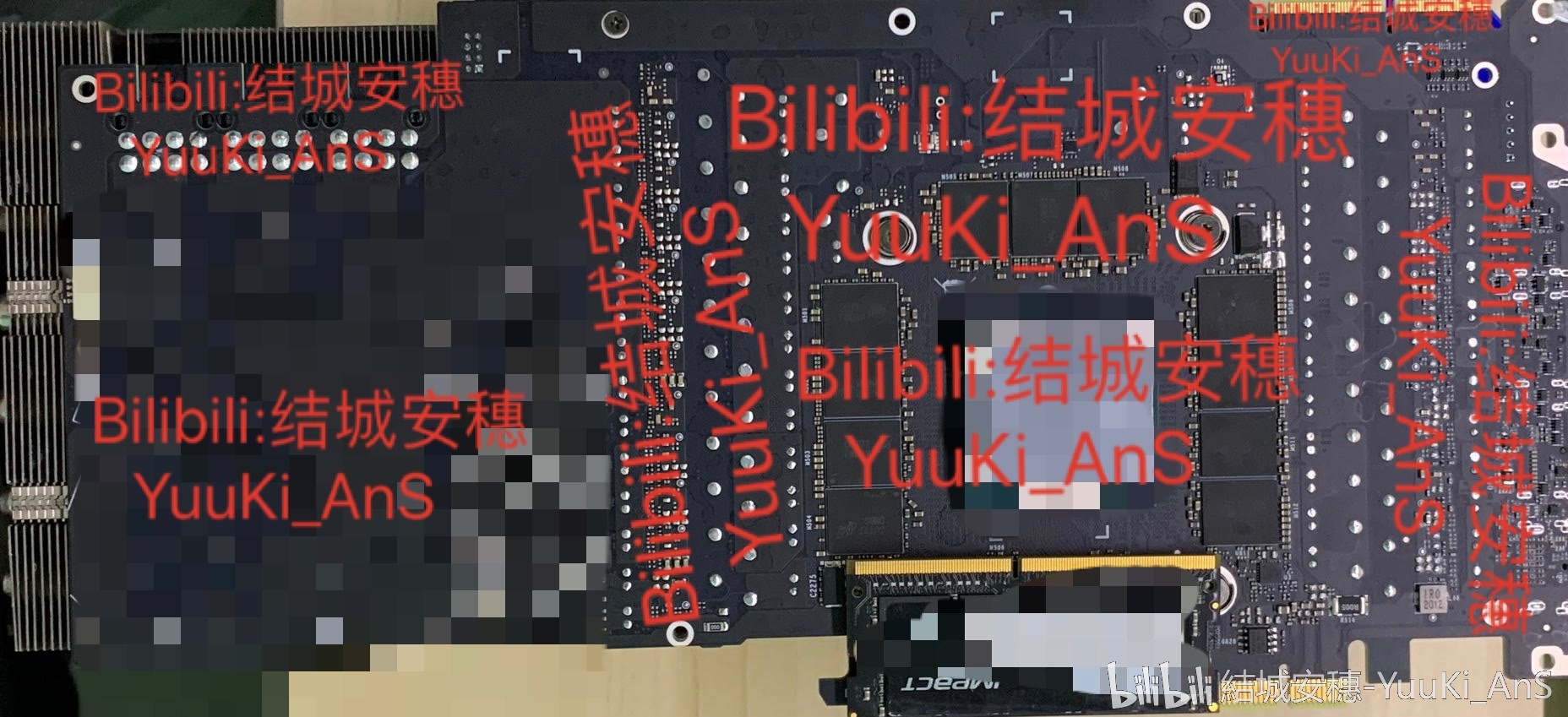
The PCB is also equipped with three eight-pin power connectors (not yet with the new twelve-pin connector, that has been reported in rumours), which would imply a TDP between 300 and 450 watts. It’s not given it will be this much however, Nvidia could be overprovisioning the power supply to have some headroom. And we also don’t know for sure whether this is really a reference PCB from Nvidia or a AIB partner custom board intended for an overclocked card. According to the leaker, the photo might show a card from the Chinese vendor Colorful. If it is a custom design, then the brutal power delivery does not necessarily mean that the same will be the case even on cheaper designs with reference frequencies.
The official unveiling comes right after the end of August
As already mentioned, Nvidia should reveal Ampere on September 1. The company has already officially launched a countdown leading up to this date, at the end of which we can expect the unveiling of the GeForce RTX 3000 graphics cards. The first SKUs will probably not hit stores until a few weeks later than that, but we should find out about the new features, architectural details and perhaps even about prices and full specification in advance on that day.
English translation and edit by Lukáš Terényi
- Contents
- The secret weapon of Ampere GPUs: new GDDR6X memory technology
- Specifications of GeForce RTX 3080 and GeForce RTX 3090 in the leaks so far





